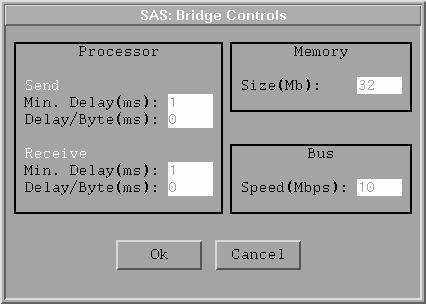Chapter Contents
Previous
Next
|
Chapter Contents |
Previous |
Next |
| LAN Environment |
In a real LAN topology, bridges operate in the data link layer of the OSI Reference model [Tanenbaum 1996]; therefore, they ignore any network layer information in the data packets. A bridge buffers each packet in its memory and then decides if it needs to forward the packet onto another LAN. Different types of bridges use different algorithms for determining when and where to forward packets. All of these algorithms keep an internal cache containing packet forwarding information. The algorithms' details can be found in [Tanenbaum 1996] and [Perlman 1992]. The Bridge model in netWorks uses a spanning tree algorithm.
Sample Bridge model controls are shown in Figure 4.12.

|
Chapter Contents |
Previous |
Next |
Top |
Copyright © 1999 by SAS Institute Inc., Cary, NC, USA. All rights reserved.